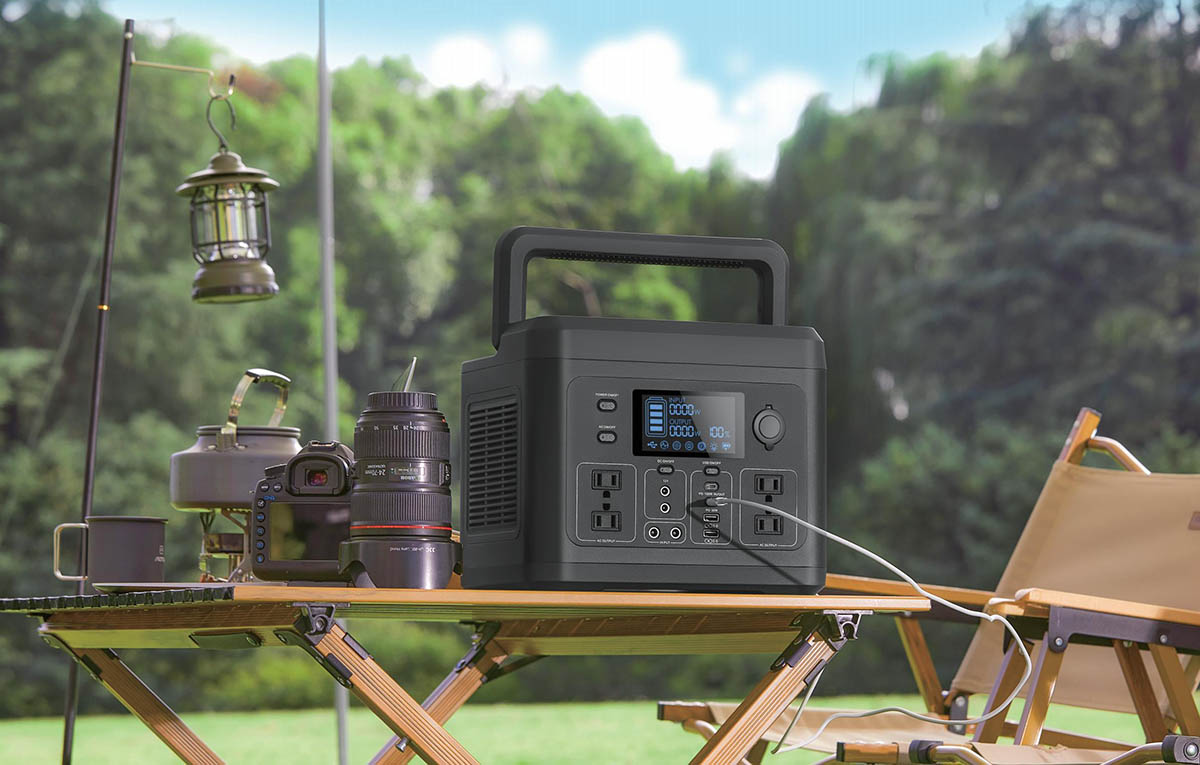Portable energy storage products have always been popular in the outdoor recreation areas of developed regions, especially in Europe and America. The impact of recent global events, such as the pandemic, has spurred the robust development of the domestic outdoor power market in the post-pandemic era. The demand for emergency rescue, outdoor operations, live streaming in outdoor settings, street-side economies, and road trips has led to a continuous surge in the industry scale and market sales. Simultaneously, the continuous advancement and widespread use of lithium-ion battery technology have driven down the prices of portable energy storage products, facilitating the rapid development of cost-effective solutions based on lithium-ion batteries.
Chargers, batteries, and inverters constitute the main components of high-power outdoor power charging and discharging systems. Ensuring the safe, efficient, and long-lasting operation of these components is the key focus of system design. Typical outdoor power sources include features such as real-time power consumption data sampling, over-voltage and over-current protection, human-computer interaction, and alarm systems.
**Keywords: Portable Power Station, Charger, Inverter, Lithium-ion Battery, Human-Computer Interaction**
When experiencing the great outdoors or engaging in outdoor operations, the issue of power supply becomes a prominent concern. In comparison to various scenarios of outdoor power usage, an increasing number of people are favoring energy storage power sources.
Here, we refer to outdoor power sources with inverters, an extension of the functionality of traditional power banks. Traditional power banks with a capacity of around 100W can only meet the charging needs of small electronic devices such as smartphones and tablets. For instance, the Xiaomi power bank is a typical example that can be conveniently carried around.
However, when the power requirement reaches 500-1000W, portable power stations can provide AC electricity output. Taking the Green Power 560Wh product as an example, in addition to USB type-A and type-C output ports, it also features an AC socket. This allows it to cater to larger power appliances, making it suitable for activities like boiling water and watching movies using a projector, ideal for suburban outings.
For outdoor power sources with a power range of 2000-2500W, they can support higher-powered appliances, providing extended leisure and outdoor operation times. Using the Green Power 560Wh product as an example, it is suitable for camping and road trips.
For even higher power sources, selecting the appropriate battery cells and configurations is crucial. Designing a suitable Battery Management System (BMS) architecture, information collection, communication, and control strategies based on this configuration are essential to address intelligent, efficient, and safe charging issues with battery packs. A brief understanding of the hardware structures of various outdoor power source brands can be gained through disassembly videos.
Product quality is designed rather than detected. Reflecting on the development process, a deeper understanding of the logical thinking involved in product design is gained. Knowing the reasons behind decisions made at different stages of development, targeted testing and validation are conducted to ensure long-term, cost-effective, and efficient management of our product's lifecycle.
GreenPower is always here for you and your new energy business:
Whatsapp: +86 18221155255
+86 17311228539
Email: Steven.Chen@fgreenpv.com
Info@fgreenpv.com
Post time: Jan-18-2024












